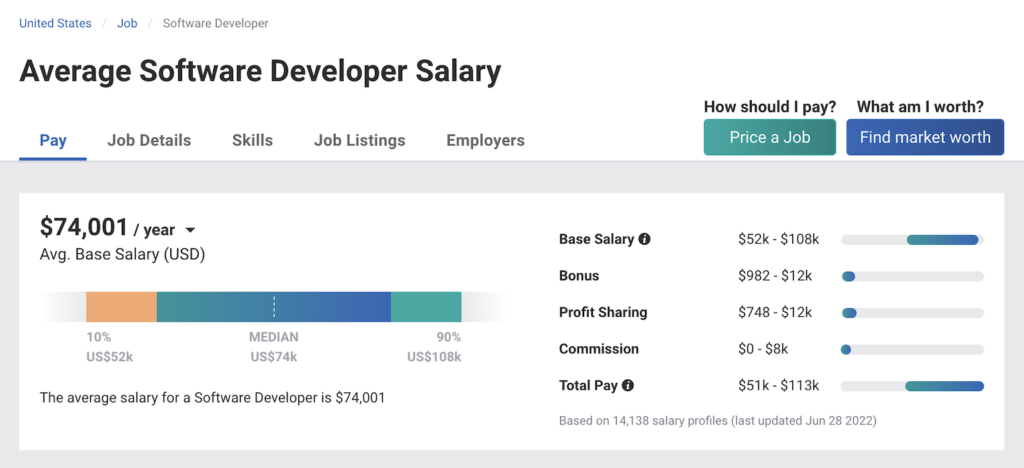Dedicated Developers vs. In-House Teams: Which Is Right for You?
The decision between utilizing specialized programmers and maintaining an internal team is a substantial one that can impact the trajectory of your tasks and total organization method. Conversely, in-house groups add to a cohesive firm culture and a nuanced understanding of long-lasting objectives.
Recognizing Committed Developers
The expanding demand for specialized skills in the tech sector has actually led to the appearance of devoted developers as a viable remedy for numerous companies. These experts are normally gotten on a project basis, allowing companies to leverage certain knowledge without the long-lasting dedication associated with full time hires. Devoted designers are often ingrained within a customer's team, giving flexibility and scalability to meet project requirements.
This design permits companies to access a global talent swimming pool, which is especially beneficial in a swiftly progressing technical landscape. Committed designers can be sourced from different geographical locations, making sure that business can locate the ideal skill established at competitive rates. They typically bring a riches of experience and knowledge, having worked with varied projects across different industries.
Moreover, committed programmers can concentrate specifically on the tasks at hand, boosting performance and performance. They are geared up to integrate perfectly into existing process, teaming up closely with in-house groups to attain project goals. This approach not only lowers the concern of recruitment and training however also allows organizations to stay nimble, adjusting quickly to changing market demands and technological advancements.
Benefits of In-House Teams

Moreover, internal groups tend to have a much deeper understanding of the business's objective, worths, and goals. This alignment can boost employee interaction and inspiration, as employee feel more connected to their job and the company's success. Furthermore, having a dedicated internal group allows for better placement of goals and strategies, as these members are constantly concentrated on the business's concerns.
In-house teams likewise promote quicker decision-making procedures, as they can respond a lot more quickly to changes and obstacles. The established connections and experience with business methods enable for structured workflows and lowered miscommunication. Ultimately, the mix of a cohesive culture, positioning with business objectives, and reliable communication makes internal groups a beneficial asset for lots of organizations, particularly those seeking to grow long-lasting development and development.
Price Considerations
When assessing price factors to consider, both internal teams and specialized developers existing distinct financial ramifications for companies. Engaging specialized designers generally includes a pay-per-project or per hour rate version, which can be cost-effective for organizations with rising and fall job demands. This strategy permits flexibility in scaling sources up or down, making certain that firms only spend for the solutions they need.
In comparison, internal groups involve dealt with expenses, consisting of salaries, advantages, and overhead costs such as workplace area and equipment. While this version offers greater control and prompt availability of sources, it might bring about greater lasting expenses, particularly if the work does not warrant a full-time team.
Furthermore, companies need to think about the hidden prices related to employment and training of in-house workers, which can further strain spending plans. In some instances, the moment and sources invested on taking care of an in-house team can interfere with the company's core business purposes.

Job Management and Flexibility
Task administration and versatility are essential variables that influence the option in between in-house teams and specialized designers. Committed groups often have actually developed processes for taking care of projects properly, leveraging details techniques like Agile or Scrum, which promote repetitive progress and versatility.

Inevitably, the selection in between dedicated developers and internal teams rests on the wanted degree of flexibility and the certain task administration demands. Business should review their operational characteristics, job intricacy, and source accessibility to determine which alternative aligns ideal with their critical goals.
Making the Right Option
Choosing have a peek at this site the ideal growth approach-- specialized designers or in-house groups-- requires a mindful analysis of numerous variables that align with a company's critical goals. nearshore software development. Initially, think about the nature of the task. Committed designers may be a lot more ideal if it demands specialized skills or a quick scale-up. Alternatively, internal groups can give far better continuity and combination with existing employees.
Following, assess your budget plan. Devoted programmers frequently provide an economical solution for temporary jobs, while in-house teams might incur higher long-term expenditures due to salaries, benefits, and expenses costs. Examine the level of control and partnership wanted; in-house groups generally promote more powerful communication and alignment with company society.
If immediate results are necessary, dedicated developers can be onboarded quickly, whereas constructing an in-house group takes time for employment and training. If continual development is vital, spending in an internal find out team may yield much better returns over time.
Conclusion
Finally, the choice in between committed designers and in-house teams depends upon job requirements and organizational goals. Dedicated programmers offer adaptability and specific experience, making them appropriate for temporary initiatives. Alternatively, internal teams cultivate a cohesive society and much deeper placement with long-term goals. Mindful examination of budget plan restraints, job timelines, and desired control degrees is essential for determining one of the most proper technique, making certain alignment with calculated priorities and operational performance.
The choice in between using devoted designers and maintaining an in-house team is a considerable one that can affect the trajectory of your jobs and general company approach.Project monitoring and flexibility are critical factors that influence the option global software development teams between specialized designers and in-house groups. nearshore software development.In contrast, internal groups may succeed in maintaining a consistent task monitoring framework due to their experience with the organization's society and long-lasting objectives. Committed designers frequently present a cost-effective service for short-term projects, while internal teams may incur greater long-term expenditures due to salaries, advantages, and expenses costs.In final thought, the choice in between in-house teams and devoted programmers hinges on task needs and organizational purposes